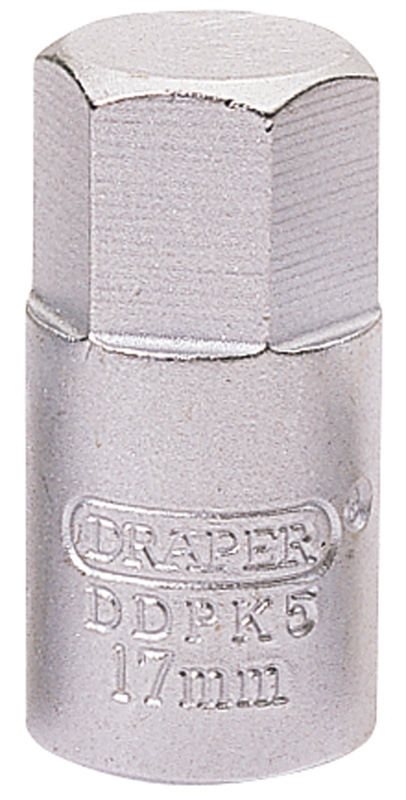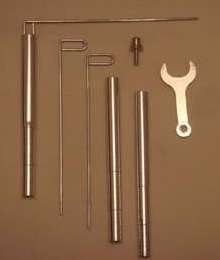Working on modern cars, I'm constantly amazed at how many tools I don't have. Mostly specialized stuff–think code scanners to bleed the brakes and similar items.
It got me thinking: are there any tools that becoming rarer because they're only necessary for classic cars? One thing I thought of is a point file–when's the last time you used one of those?
My father recently gave me his old Simpson 260 multimeter. I have a bunch of digital meters, but sometimes, an analog meter tells you more.

Manometers (or Uni-syn type devices) - for carb syncing. They can still be found, but single throttle body applications just don't require them. Simple manometers can be mad easily though.
Dang- beat me to it
Whitworth!
And SAE too, come to think of it.

Rupert
HalfDork
10/17/14 11:26 a.m.
In reply to Woody:
Woody,
I saw a guy get branded with one of those! In a locomotive test cell he was standing on the floor with his meter sitting on a shelf about neck high. He then reached up with the leads to probe the appropriate test points. He had just checked battery charging voltage on a locomotive.
Then he went to check no load voltage on the main alternator itself. He forgot to change his meter from 0-100 volts to max. While the engine and alternator was revved under no load conditions and the voltage increased, the probe leads overheated, came loose from the probes and wrapped themselves around his neck while still red/white hot. He was probably lucky to survive.
I still have my old 260 in the wooden box that was made for it. But I'm always mindful to assure everything is set for the appropriate function before taking a test!
Dwell Meter is now less usefull than the timing light. Except on cars with distributers.

Rupert
HalfDork
10/17/14 2:43 p.m.
Keith Tanner wrote:
Whitworth!
And SAE too, come to think of it.
Funny, in the auto business in the 80's any customer including Ford & GM that submitted any new project to be put out for bid. If any drawings, calculations, or measurements were in SAE or inches, we knew it was an old design or old part being re-used in the new job.
So of course we jacked up the prices knowing we'd have to have a metric crossover to anything new they wanted to do. Plus finding someone to supply SAE parts was already getting tough. I can't imagine anything metric today.
Timing light, dwell meter, and a combo fuel pressure vacuum gauge. Keep this all in one tool box, along with a grease marker, spark plug feeler gauges, and other assorted old timey tuneup tools.
How about this wrench? Can you guess its purpose?
Stu

Correct! That was too easy, I guess. I got this for the Ford engine in my Tiger. It makes tightening after adjusting almost easy.
Stu
gjz30075 wrote:
Any shop manual.
I'm going to have to disagree there. There's still nothing that replaces a good factory manual.
In reply to Basil Exposition:
Windshield seal tool wasn't Jag specific. I have one I used on my Opel GT. And I've used them on helicopter window seals.
I've used one of these a bunch. 17mm drain plug socket.

I made one of those years ago out of a socket and an Beetle trans-to-engine bolt.
Used it not long ago on the Oval Window to fill the trans after an axle seal leak.
Found a similar (home bent) distributor wrench at the junk yard on the fender well of a Chevy Suburban with a distributor missing . . .
Hehehe...
I have the Uni-Sync, the volvo drum puller, a dwell meter, 3 different distributor wrenches, flexible GM dwell angle adjusting tool....
does anyone remember these?

Why/What was the one brass one for???
Setting flywheels? Non-magnetic? There's something I obviously don't know about small engines. I've always wondered why the brass feeler as well.
I had to use a brass one for a setting in the distributor of my Jag XJS, as well.

T.J.
PowerDork
10/19/14 5:11 a.m.
I never knew that about the brass feeler gauge. I keep a set of feeler gauges in the toolbox that lives in the Mini's boot. I have what is essentially a long ass allen wrench that is used to adjust the ride height on my Mini. It's about 20" long or so.
I have several old sets of feeler gauges, but none are brass. When I set the magneto gap on a mower, I just got a piece of paper that seemed to be about the right thickness and tightened the screws with the paper between coil and the flywheel. This mower's been running fine for years after I did this, so my guess at the gap must have been good.
Stu
from what I remember... the brass feeler gauge was for mid/late 70s Chrysler electronic ignition. The unit was still open to adjustment - like points. The brass gauge was there so you wouldn't "cook" the mag pick up
likely why its been forgotten because not much from that period is, or ever will be considered "classic"
























































